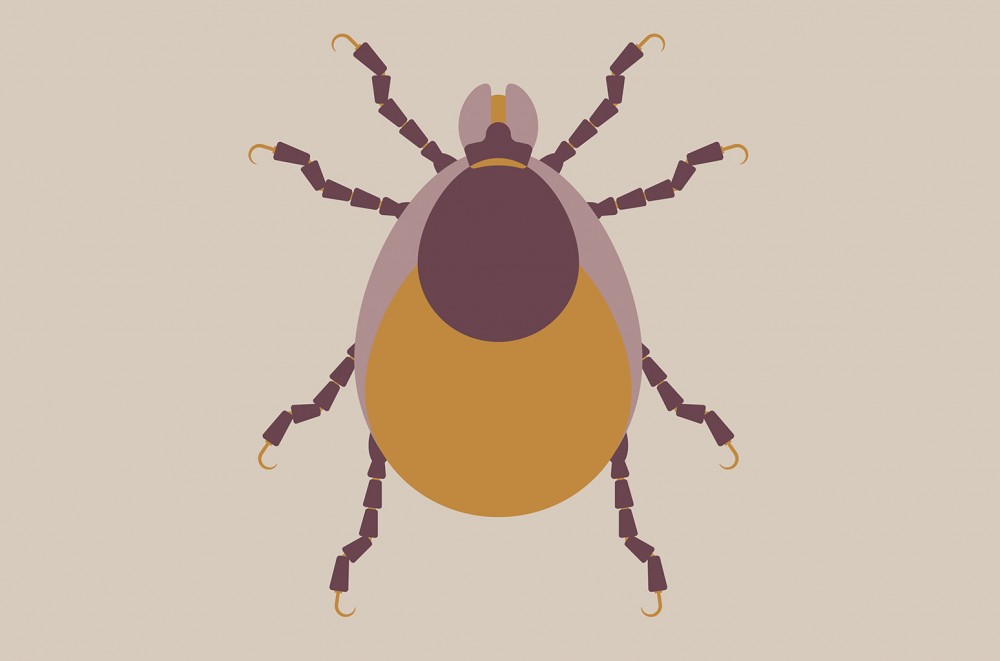
Justin Bieber’s Lyme Disease: An Expert Shares Potential Good News, Possible Complications
 87
87  88
88
Executive Director of Bay Area Lyme Foundation breaks down the tricky treatment of the tick-borne ailment.
Justin Bieber shared some shocking personal news on Wednesday (Jan. 8) when he revealed that he'd recently been diagnosed with the incurable tick-borne ailment Lyme disease.
The singer explained that "a lot of people" had commented that he "looks like shit, on meth etc." without realizing that he'd just gotten the news about the Lyme diagnosis as he was also battling a chronic case of mono, which he said had affected his "skin, brain function, engery, and overall health."
While Bieber promised to discuss and dissect all those issues in his upcoming 10-part YouTube Originals docu-series, Justin Bieber: Seasons (premiering Jan. 27), Streets Talkin reached out to Linda Giampa, executive director of the Bay Area Lyme Foundation for a breakdown of the causes, symptoms and leading research into the disease that infected an estimated 420,000 Americans in 2019 and is currently found in 65 countries.
"Lyme disease is the fastest-growing vector-borne disease in the U.S. and Europe," says Giampa of the ailment, which is spread by mosquitoes or ticks after they bite into a victim's skin and draw blood. Some have attributed the rapid spread to climate change and shifting bird migration patterns, noting that ticks are staying alive through the warmer winters in areas they previous had not, as well as people moving around the country and bringing ticks unknowingly into areas they didn't previous inhabit. Giampa, whose organization is the largest Lyme foundation in the world, seeks to raise money for research into an accurate diagnostic tool for acute Lyme disease and novel therapies for people with chronic Lyme illness.
To date, the BALF has raised more than $32 million to fund research at more than 37 institutions around the country including Standford, Tulane, MIT, Columbia and dozens of other leading research institutes. After its discovery in 1977 in the Northeast, Lyme has become prevalent in Maine, Pennsylvania, Minnesota, Wisconsin, Michigan and California — as well as the San Francisco Bay Area, up to the Marin Headlands and down to San Diego — with cases popping up in all 50 states so far, with an estimated 40 percent of ticks carrying the disease in some areas.
"I don't want to frighten people [away] from enjoying the outdoors, but there are several things you can do [to avoid infection]," says Giampa, beginning with awareness that ticks are out there in the brush "questing" for humans to infect as they hide in blades of grass, on logs and leaves, waiting to grab a ride on a human and draw blood.
She shared a few important recommendations to avoid infection:
— When hiking, tuck your pants into your socks as ticks will grab onto your clothes seeking moist areas of the body to burrow into.
— Wear insect repellants with DEET.
— Stay in the middle of trails rather than walking through the brush, avoid sitting on logs and leaves.
— Most importantly: do thorough tick checks on yourself and animals when you get home, take off your clothes and before you wash them put all articles in a hot dryer for at least 20 minutes before taking a shower.
"If you just wash your clothes, they won't die," she says. "Make sure there's nothing weird on your skin or head when you come back because catching it early and finding a tick is the best way to prevent Lyme disease." Giampa, who is not a physician and has no first-hand knowledge of Bieber's condition, explains that the infection carried by deer ticks is caused by the Borrelia burgdoferi bacteria, though a lot of ticks carry other co-infections, including Bartonella and Rocky Mountain Spotted Fever.
At press time, it was unknown if Bieber is suffering from acute or chronic Lyme disease. The former typically manifests when someone who knows they've been bitten by a tick sees a doctor after suffering from flu-like symptoms (aches and pains in joints), fatigue, headaches, night sweats and sensitivity to light. The good news is that if caught early, acute Lyme disease can be treated with a 28-day cycle of the antibiotic doxycycline, which can often have good outcomes. Unfortunately, she says there's not currently an accurate diagnostic — blood or urine test — to confirm Lyme, which is why getting a definitive diagnosis is so hard, especially if the patient is not aware they've been bitten. There is also no known cure.
"The issue is with people who don't know and they have strange symptoms a month or two later — after they went walking in the Hamptons or something — and they don't put it together or they doctor doesn't, which is why we've been working on a campaign to encourage doctors to ask that first," she says, noting that it's not unusual for sufferers to be brushed off by physicians and others who don't "see" the ailment. That kind of disregard may have inspired Bieber's wife, Hailey Baldwin, to tweet at those who she said were "trying to downplay the severity of Lyme disease," or make fun of it, after Justin announced his diagnosis.
Lyme patient Evan Golub understands her frustration about the difficulty for some in accepting the not-easily-diagnosed, hard-to-visualize disease, which is one of the reasons he recently co-founded the community app WANA (We Are Not Alone), which connects people with chronic and "invisible" conditions. "I became chronically ill in January 2013 when I woke up in my apartment with a crazy case of vertigo and was throwing up for two weeks and I was misdiagnosed for years across 30 practitioners," says Golub, who was treated for migranes, inner ear infections and other symptoms without getting to the root cause of what was making him sick.
After being diagnosed with Lyme in 2017, Golub began dedicating his life to learning more about the disease, which led him to co-founding the digital platform that connects people with chronic conditions. WANA launched in the app store three months ago and he says it has quickly racked up 16,000 messages and 4,000 downloads in which people share stories about their symptoms, diagnoses, misdiagnoses, helpful podcasts and supplements that work. "It's about providing information and people who understand what you're going through, because when it comes to these invisible conditions your doctor doesn't really understand you," he says, explaining that Lyme sufferers often seem healthy on the outside and are sometimes told the symptoms are all "in their head."
When someone like Bieber shares his diagnosis, Golub says it helps to level the playing field, because regardless of the resources the "Yummy" singer — or other celebs such as Avril Lavigne, Shania Twain, Alec Baldwin and Yolanda Hadid — has, he doesn't necessarily have access to any better solutions than anyone else. "When you're dealing with a chronic/invisible condition, it's about connecting with people who've been through the journey and so when Bieber — or an 18-year-old just diagnosed with no resources — goes on WANA it allows them to connect with people in a similar situation," he says. The app matches people by shared diagnosis, symptoms and distance, allowing users to find connection and support near you to achieve the best results.
Making things even more difficult, Giampa says more than 50 percent of people don't get the iconic "bullseye" rash, which is why they don't think to go see a doctor until other symptoms pop up, at which point the condition could advance to the type of debilitating chronic Lyme disease suffered by Lavigne. Unlike the flu-that-won't-go-away acute Lyme, chronic versions can manifest as painful arthritis in the joints, neuropathy and a "brain fog" that makes it hard to think straight because the Lyme bacteria likes to hang out in fatty tissue in joints and the brain.
For now there are tests for Lyme disease that Giampa says are not very accurate and while there is no cure, there are three drugs that have shown some promise — Loratadine, Dapsone and Disulfiram. "It's possible Justin also had mono — there are a lot of weird co-infections that come with Lyme disease because your immune system is compromised when you're battling this bacteria," she says of the other ailment Bieber noted in his statement.
With the singer preparing a comeback album and tour, Giampa says there are likely some concerns his medical team are addressing during treatment. "Even if you treat it, you're never really rid of it. People who are 'cured' are feeling 80-90 percent better and living a good life, but even if they take good care of themselves they could have a good four or five years and then something stressful triggers it and the bacteria wakes up again," she says of the potential for a grueling tour to trigger a recurrence. "Any stress or exertion can bring on symptoms. He's [Bieber] 25 and it's not clear if it's acute and how early it was diagnosed, but if they attacked it right away there's a good chance he can live a good life if he does things like drinking plenty of water, taking herbal medications and [taking care of himself]."
If you or someone you know are suffering from Lyme disease, check out these resources for more information: Lyme Disease Association, Global Lyme Alliance, The Avril Lavigne Foundation.


